Introduction to Sempervivum Cebenese
Imagine a plant that captures the essence of rugged mountain landscapes and yet fits perfectly into the palm of your hand or a small crevice of your garden. Meet Sempervivum cebenese, the hardy and charming succulent that’s been winning over gardeners’ hearts with its tenacious nature and simplistic beauty.
Often referred to as ‘Houseleeks’ or ‘Hen and Chicks’, Sempervivum cebenese is a beloved species in the world of alpine plants. Picture this: clusters of rosettes, each one an intricate design crafted by Mother Nature, thriving in the nooks and crannies of high-altitude environments—this is the rustic charm of Sempervivum cebenese. But guess what? You don’t need a mountain to enjoy its splendor. These succulents have a knack for adaptation, making them a superb choice for rock gardens, fire escapes, or any sun-kissed spot calling out for greenery.
Here in our backyard, we have a small rockery that mimics an alpine scene, adorned with these small but mighty plants. The sight of Sempervivum cebenese’s emerald green and ruby red hues intermingling among stone paths is a testament to the beauty that can be cultivated at any altitude. Such real-life examples serve as inspiration, challenging us to reimagine the use of succulents within our own green spaces.
But it’s not just their aesthetics that make these plants a pragmatic pick for gardeners. Sempervivum cebenese has a resilience to extremes. They laugh in the face of drought, shrug off freezing temperatures, and can survive with minimal care, making them a dream for the busy, the forgetful, and the novice gardeners alike. In fact, learning about their succulent care could turn even the brownest thumbs green.
The beauty of Sempervivum cebenese goes beyond its versatile toughness; there’s an intrinsic lesson in these plants about perseverance and the art of thriving against the odds. So, let’s discover the allure of cultivating mountain beauty in your garden with Sempervivum cebenese, a succulent that promises a hardy spirit and an evergreen appeal in any setting.
Botanical Profile of Sempervivum Cebenese
Step into the enchanting world of Sempervivum cebenese, a plant whose very name hints at its resilient nature. “Sempervivum” translates to “live forever,” which speaks volumes about its hardy spirit, thriving amidst rocky crags and windswept heights. Imagine a plant so tenacious it clings to life on the precipice of a mountain—a true high-altitude champion! This remarkable survivor is not only a botanical wonder but also a testament to the unyielding force of life.
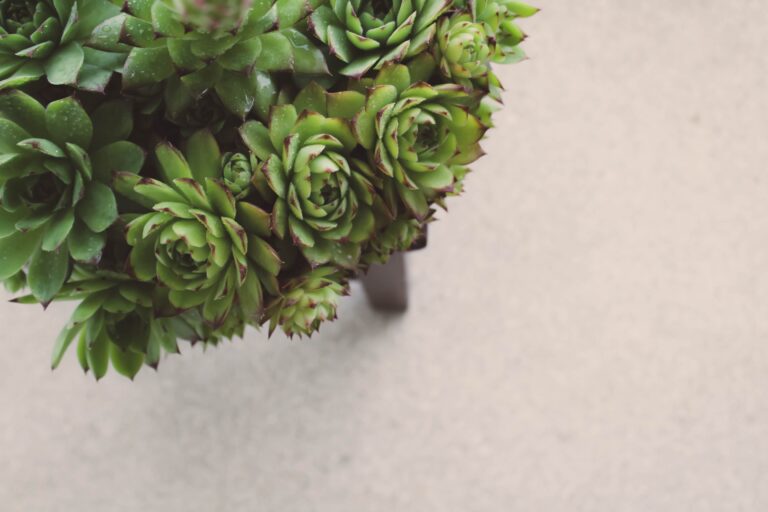
Lovingly nestled within the family Crassulaceae, Sempervivum cebenese is no stranger to adversity. Its family lineage boasts an array of succulents, each with their unique adaptation to conserve water in arid climates and rugged environments. Native to the higher elevations of Central and Southern Europe, their origins paint a picture of perseverance and adaptation. It is an embodiment of nature’s ingenuity, crafting a plant perfectly suited to endure the whims of its alpine home.
When you encounter Sempervivum cebenese, you’re not just seeing a plant; you’re witnessing a legacy of evolution’s finest work. Each rosette is a natural archive of survival strategies—water-storing leaves, photosynthesizing prowess, and a root system designed to anchor it against the odds. These botanical gems are natural history’s treasures, flourishing where few dare to take root. It’s a living mosaic of green, defying the harshness of its birthplace, framing a narrative of life’s enduring will.
So next time you traipse through a garden or hike up a rugged trail, keep an eye out for Sempervivum cebenese. Its scientific tale is one of conquest, of claiming life in the face of barren soil and thin air. It is more than a botanical specimen; it’s inspiration growing from the earth, a lesson in resilience gracefully shared with every garden it graces. Indeed, in every leaf and petal of Sempervivum cebenese, there lies a story of fortitude waiting to be told.
Key Characteristics and Varieties
If you’ve been mesmerized by the rugged charm of Sempervivum cebenese, also known as houseleeks, you’re not alone. These mountain treasures not only add a touch of alpine splendor to your garden but are a testament to nature’s resilience. Sempervivum cebenese, with its thick, fleshy leaves forming tight rosettes, is a succulent designed to withstand the trials of rocky terrains and extreme weather.
As we get to know this plant a bit better, we’ll find that it boasts a variety of forms, each with its own distinct personality. The common thread among them is their succulent leaves, which come in an array of colors from deep greens to purples, often tipped with a contrasting hue. Imagine the joy of discovering the ‘Bronze Pastel’ variety, with its subtle bronze tones that seem to dance in the sunlight. Or perhaps the ‘Red Rubin’, which, like a fine wine, has a deep, rich red that becomes more pronounced with colder weather.
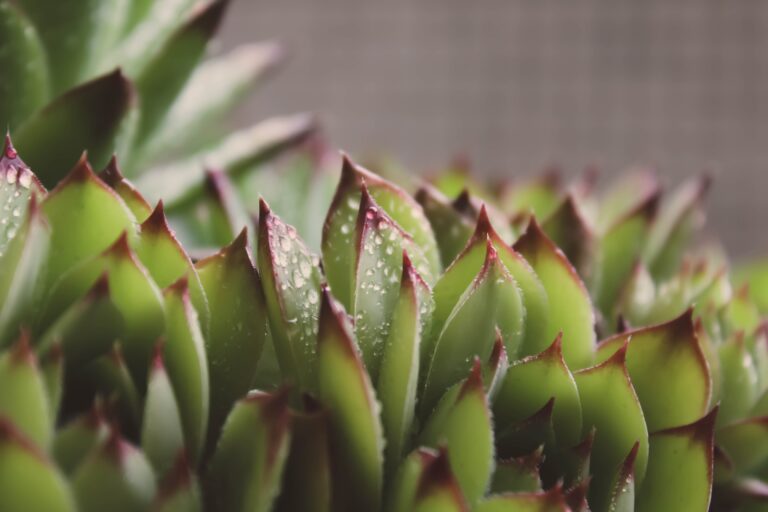
Don’t be fooled by their delicate appearance; these plants are as tough as old boots. Out in the wild, nestled in craggy rocks and thriving on sheer cliff faces, Sempervivum cebenese plants go about their business without much fuss. But bring them into your home garden, and they shine like the stars against a twilight sky, asking only for a gritty soil mix and the kiss of the morning sun to flourish. Whether you’re a seasoned green thumb or new to the world of gardening, turning to a comprehensive guide for care instructions will ensure these succulents reach their full potential.
Variety is truly the spice of life, and with the wide array of Sempervivum cebenese to choose from, you can curate a collection that rivals the diversity of a mountain meadow. Delight in the ‘Green Wheel’, a variety that forms large, dense rosettes, or the ‘Carnea’, which flaunts a lighter green shade. Each variety has adapted in its own unique way, some putting forth star-shaped blooms that lure pollinators to their sweet nectar, while others may offset freely to create a lush carpet of greenery.
In essence, the Sempervivum cebenese isn’t just about its hardy nature or the spectrum of varieties available—it’s about bringing a slice of the mountain range into your own backyard. It’s about crafting a space where each rosette tells a tale of survival, beauty, and adaptability—a true garden masterpiece that resonates with the spirit of the wilderness from which it came.
Optimal Growing Conditions
Have you ever wondered how to bring a touch of alpine charm to your garden? The answer lies with the delightful Sempervivum cebenese. Tucked away in mountainous terrains, this succulent thrives amidst rocky crags and sunlit ledges. Let’s translate that rugged beauty into a perfect growing spot right in your backyard!
First things first, soil is the foundation of life for plants, and Sempervivum cebenese adores a well-draining mix. Are you picturing a sandy, gravelly substrate? Exactly right! Think of it as the kind of soil that lets rainwater slip through without loitering—no soggy feet for these mountaineers. Here’s a deeper dive into their care if you’re curious to learn more.
When it comes to lighting, these succulents are sun-lovers at heart. Envision those lofty peaks basking in sunlight—that’s what they’re accustomed to. Hence, your Sempervivum cebenese will be happiest in a spot where the sun’s rays can lavish them with attention for most of the day.
But what about climate? These hardy little beauties can cope with a chill, nodding through frost like a true highlander. Yet, they don’t fancy the extremes of a scorching desert or a damp swamp. Keeping them in conditions that mingle cool nights with sunny days is the aim of the game. If you’re considering raising these gems in containers, check out this guide to ensure your potted beauties flourish.
Keep it simple—soil that drains like a sieve, a sunbathe a day, and temperatures that mimic their alpine homeland, and you’ll see your Sempervivum cebenese flourish into a lush carpet of living art. Adopt these tips and watch as these resilient succulents transform your garden into a mini mountain retreat.
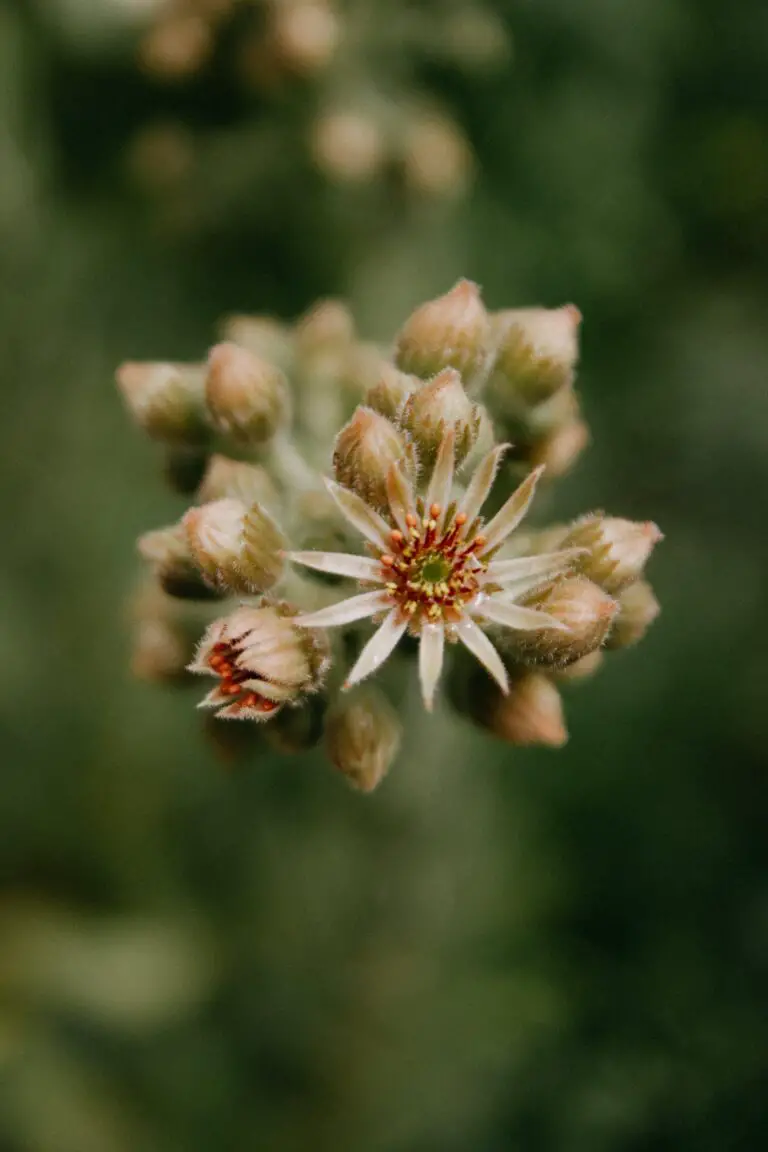
Planting and Propagation Techniques
When it comes to embellishing your garden with rugged mountain beauty, the Sempervivum cebenese is a sterling choice. Now, let’s talk about how you can successfully plant and propagate these hardy succulents to breathe alpine freshness into your green space.
Setting the Stage: Planting Your Sempervivum Cebenese
Firstly, envision the craggy terrains and the free-draining soils of high-altitude habitats—this is what your Sempervivum cebenese will thrive in. Opt for a spot where the sun kisses the leaves with its morning warmth while shielding them from the harsh, afternoon glare. A blend of soil that boasts excellent drainage, perhaps a mix of potting soil with sand and perlite, will create the perfect foundation for growth and vitality.
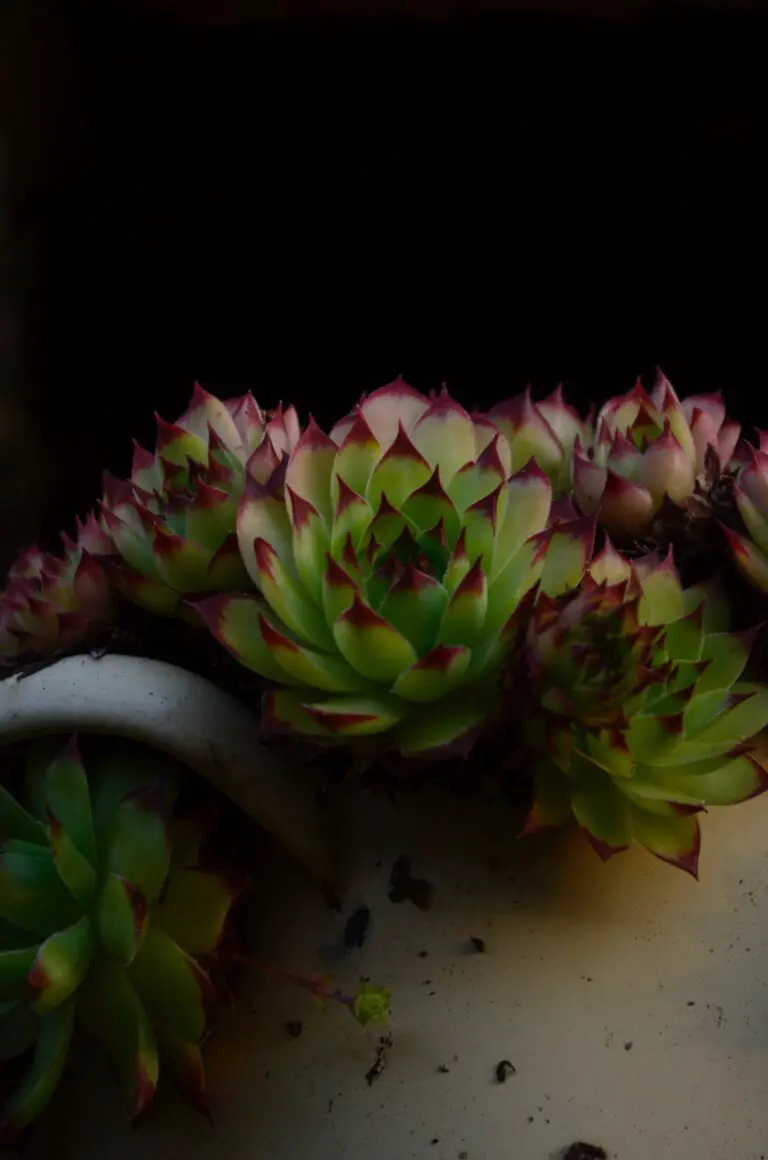
Remember, these plants don’t fancy wet feet, so a raised bed or a slope that mimics their native incline can be a game-changer. A visit to my favorite online planting guide will offer deeper dives into crafting the idyllic home for your sempervivum.
Offshoots & Offsprings: Propagating New Plants
The magic begins as your Sempervivum cebenese matures—tiny replicas called “offsets” emerge, huddled around the mother plant like ducklings around a pond. These offsets, or ‘chicks’, can be gently snipped and transplanted. The secret to success lies in patience; let the cut end callous for a day or two to prevent rot, and then nestle them into their new home, where they’ll soon take root and flourish.
Whether you’re crafting a rocky container ensemble or expanding a succulent tapestry along a dry stone wall, the Sempervivum cebenese endears itself with minimal fuss. Its propagation prowess, coupled with an appetite for even the most Spartan conditions, makes it a darling de resistance of rock gardens and rooftop sanctuaries alike.
Routine Care and Maintenance
You’ve brought a touch of alpine splendor to your garden with the Sempervivum cebenese, a hardy succulent that thrives with simplicity. However, regular upkeep is key to ensuring your mountain beauty continues to grace your garden with robust health and vigor. Let’s explore the routine care that these durable plants require.
Understanding the Basics
First things first: Sempervivum cebenese is as low-maintenance as they come. These resilient rosettes are accustomed to the harsh conditions of mountainous regions, meaning they’re well adapted to survive with minimal fuss. Watering is a prime example; these succulents prefer a ‘soak and dry’ method. Imagine a rare, high-altitude storm drenching them in moisture, followed by a spell of complete dryness – that’s the routine your plants crave. Overwatering is a common misstep, so it’s best to err on the side of underwatering. If in doubt, let the soil’s dryness be your guide.

Seasonal Considerations
As the seasons wheel by, your Sempervivum cebenese will expect certain conditions to mimic its native habitat. During the dormancy of winter, this mountain gem wants rest. Tuck it in with less frequent watering and ensure it’s not smothered by winter’s blanket – snow or debris can be detrimental. Come spring, lengthening days and warmer soils will kickstart its growth. This is the moment for a nutrient boost, so consider a half-strength fertilizer to cheer it on.
Battling Pests and Problems
Even the stalwart Sempervivum cebenese isn’t immune to the occasional pest or problem. Mealybugs and aphids can occasionally wonder if this succulent might be a new home. Vigilance is your best defense. Keep an eye out for these tiny hitchhikers and show them the door with a gentle but firm organic insecticide or a blast of water. Rot, on the other hand, is the result of excessive love in the form of water. Remember, these plants favor the frugal life – drench their roots with affection sparingly.
Cultivating Sempervivum cebenese isn’t just about embracing a plant; it’s about cultivating resilience and independence in your garden. Armed with knowledge and respect for its basic needs, you’ll find this succulent a forgiving and endearing companion among your botanical collection.
Pest Management and Disease Prevention
As a steadfast gardener, you’re likely familiar with the twist and turns of nurturing plants, and Sempervivum cebenese is no exception. These mountain gems, with their rosette splendor, can encounter pesky visitors and unwanted ailments. But fear not! Embracing the art of pest control and disease prevention will keep your alpine beauties thriving.
Recognizing Adversaries in the Garden
Imagine a succulent haven where your Sempervivum cebenese basks in the sun, only to discover aphids feasting on its sap. It’s a common scene, yet easily handled. A sprinkle of neem oil or a soft soap solution can banish these invaders. The key is consistent vigilance. Weekly checks beneath the leaves and around the base can reveal hiding bugs, like mealybugs or spider mites, before they become a larger issue.
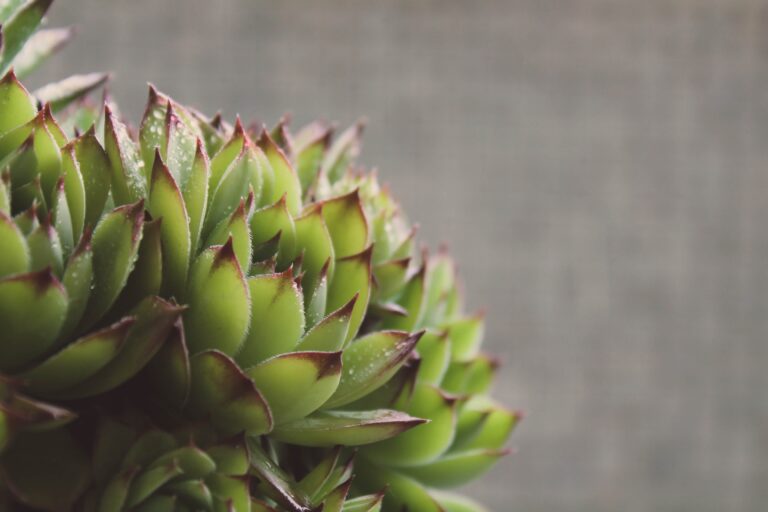
Thwarting Fungal Foes
The war against rot and mildew is won with preparation and foresight. Provide your Sempervivum cebenese with well-draining soil and ample air circulation, the linchpin of disease prevention. After rain or watering, ensure the rosettes are not holding onto moisture like tiny cups full of harmful brew. If you spot the telltale signs of powdery mildew—a dusty white coating—act swiftly. A solution of baking soda and water applied to affected areas can halt the spread, preserving the health of your succulent battalion.
A Brush with Beetles and Slugs
Our Sempervivum cebenese is not only cherished by us but also viewed as a banquet by slugs and beetles. The scenario might sound dire, but managing these mollusks and insects is straightforward. A nightly patrol with a flashlight might seem like a covert operation, but it’s effective in catching slugs in the act. Alternatively, diatomaceous earth forms an impenetrable barrier, deterring the critters from munching on your plants’ fleshy leaves.
Whether it’s a skirmish with aphids or a standoff with slugs, protecting your Sempervivum cebenese from pests and diseases is about staying proactive. With these strategies, you can enjoy a garden that’s not only a vision of beauty but also a fortress against the common foes that besiege our cherished succulents.
Creative Gardening Ideas with Sempervivum Cebenese
Welcome to a world where the rugged charm of mountain flora graces your garden with Sempervivum cebenese, a succulent that thrives in the least expected places. Imagine a plant that’s not only a survivor but also a provider of breathtaking aesthetics, versatile enough to revamp any garden space into an alpine wonderland. Let’s embark on a journey of transforming your green sanctuary with this resilient gem.
Incorporating Sempervivum Cebenese into Rockeries
Have you ever looked at a pile of rocks and envisaged a thriving garden? With sempervivum cebenese, this vision becomes a reality. Creating a rockery is a form of art that mimics the natural mountain terrains where these plants originate. Nestle them amongst boulders and gravelly soil, and watch as they weave a tapestry of vibrant rosettes, their colours shifting with the seasons. Each crevice can become a cradle for life, turning stark stones into a flourishing display.

Green Roofs Dotted with Sempervivum Cebenese
The concept of green roofs is not just a modern trend but a practical and beautiful application of sempervivum cebenese. These hardy succulents are perfect for covering your roof with a living quilt that conserves energy, reduces stormwater runoff, and battles the heat island effect. Imagine your home not just crowned with greenery, but actively contributing to an eco-friendly habitat where each sempervivum doubles as an environmental warrior.
Real-life examples abound where green-thumbed individuals have turned barren rooftops into elevated oases. In urban settings, where garden space may be limited, the roofs become a canvas for creativity, with patterns and shapes formed by sempervivum clusters. It’s a sight to behold when the sun casts shadows on these geometric beauties, proving that nature’s resilience can indeed coalesce with urbanity.
Dynamic Garden Design with Sempervivum Cebenese
Garden design is an ever-evolving art, and sempervivum cebenese make for dynamic players in this creative dance. Bordering pathways with their rosette silhouettes provides a year-round structural element that’s both eye-catching and low maintenance. Pair them with other alpine plants or let them stand solo against a gravel backdrop—their adaptability is your garden’s gain.
By encouraging biodiversity with sempervivum cebenese, you’re not just designing; you’re curating a living ecosystem. These succulents attract a myriad of pollinators, playing a crucial role in the life cycle of your garden. Plus, with their propensity to multiply, you’ll find that Sempervivum cebenese gives back far more than they take, proliferating your garden’s beauty with minimal effort on your part.
Now is the time to rejuvenate your garden with the uncompromising spirit of mountain flora. Sempervivum cebenese stands as a testament to nature’s ingenuity, and with a touch of creativity, your garden can too embody this wild elegance. Whether it’s a rockery’s nook or a rooftop haven, these succulents are ready to transform your green space into a testament to alpine allure.
The Benefits of Sempervivum in Eco-Friendly Landscaping
When we talk about eco-friendly landscaping, one gem that often goes unrecognized is Sempervivum cebenese, a hardy succulent that’s as beneficial to the environment as it is pleasing to the eye. These robust plants aren’t just an aesthetic enhancement; they’re a cornerstone in sustainable garden design.
Through its low-maintenance nature, Sempervivum cebenese serves as a prime example of how a garden can thrive with minimal water use. With droughts becoming more frequent in many regions, incorporating these succulents can lead to significant water savings. Imagine a lush, green space that remains vibrant with barely a sip – that’s the magic of Sempervivum.
Moreover, their resilience against pests and diseases translates into a reduced need for chemical interventions. By cultivating Sempervivum cebenese, gardeners can minimize the reliance on harmful pesticides, fostering a more natural ecosystem that’s welcoming to beneficial insects and pollinators. This sympathetic approach to landscaping allows us to craft beautiful gardens that also act as sanctuaries for local wildlife.
Perhaps one of the most remarkable characteristics of these succulents is their ability to stabilize soil and prevent erosion. In areas prone to losing precious topsoil to wind or rain, planting Sempervivum cebenese forms a living barrier, binding the earth and preserving the groundwork of our landscapes. It’s easy to see the practicality in this, with real-life applications evident in the green roofs of urban buildings, where these plants play a pivotal role in creating sustainable cityscapes.
It’s not uncommon to hear of community projects that champion the cause of green living, where Sempervivum cebenese has been the star of the show. Schools, urban community gardens, and even corporate landscaping projects have adopted these hardy succulents not just for their visual appeal, but for their contribution to a greener planet. Each plant acts as a small but mighty warrior in the battle against environmental degradation, making a compelling case for their inclusion in eco-conscious designs.
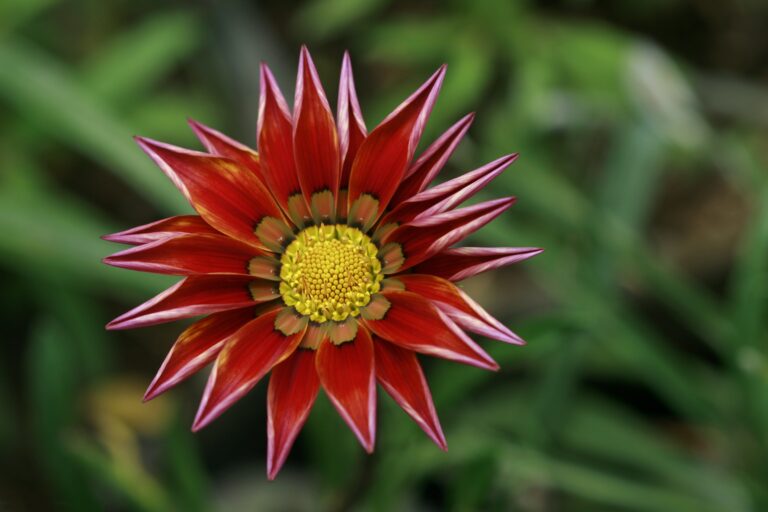
Thriving with Sempervivum in Your Own Space
Whether you’re an individual looking to add a touch of mountain beauty to your balcony or a professional seeking to greenify a corporate landscape, Sempervivum cebenese is a wise choice. It’s a testament to the plant’s versatility that despite its rugged, mountainous origins, it can adapt and flourish just about anywhere, making each of us a potential steward of these environmental allies.
Frequently Asked Questions
Embarking on the journey of cultivating the striking Sempervivum cebenese in your garden is like inviting a piece of mountain majesty into your own backyard. But as with any enduring natural beauty, questions arise. Let’s summit the peak of knowledge together to ensure your Sempervivum cebenese thrives!
How Do I Successfully Plant Sempervivum Cebenese?
Imagine mimicking the rugged alpine conditions this succulent calls home. A sunny spot with excellent drainage is your ticket to a flourishing display. Mix in gravel or sand to your soil to recreate the drainage of a mountainside. Planting your succulent buddies in rock gardens or raised beds can also emulate their natural habitat, ensuring your Sempervivum cebenese sinks its roots into the ideal home.
Are Sempervivum Cebenese Plants Frost Hardy?
Yes! These hardy survivors can endure even the chilliest of whispers from Old Man Winter. Picture it standing boldly against a frost-kissed morning, unphased by the cold. Its resilience is comparable to a mountaineer, poised and prepared for icy conditions. Even so, ensure their soil remains well-draining to avoid any frosty feet.
How Often Should I Water My Sempervivum Cebenese?
Think of watering as a delicate balance, much like the ebb and flow of mountain streams. Sempervivum cebenese prefer to dry out between waterings—overly soggy soil is a no-go. Water sparingly, as if you’re hydrating a seasoned hiker, sufficient but not excessive—allowing the plant to guide you.
What Common Pests Should I Look Out For?
Even the mightiest mountain can face erosion; similarly, your Sempervivum cebenese might encounter aphids or mealybugs. Picture these pests as tiny intruders in your plant’s serene habitat. Keep a vigilant eye, and at the first sign of these critters, take action to protect your succulent sanctuary.
And now, enrich your growing knowledge even further with a visual guide. Watch this enlightening video on Sempervivum cebenese care, and see firsthand how to continue the lineage of your mountain beauty:
Remember, every garden skipper was once a grounded learner, and every question is a stepping stone to becoming a seasoned Sempervivum cebenese cultivator. May your garden voyage be evergreen and your curiosity boundless!



